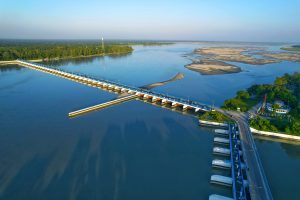
Geographical, strategic, and geopolitical factors drive India’s keen interest in engaging with the Teesta River project. It has serious security concerns over China’s involvement in a project that is close to the vulnerable “Chicken Neck” corridor, an area of high strategic importance because it connects India’s Northeast with the rest of the country. Another key concern for India is the potential reduction of Bangladesh’s dependency on India across various sectors. For its part, China views the project as an opportunity to expand its presence in South Asia and challenge India’s dominance in the region.
Although Bangladesh-India relations have reached the “highest level of friendship” over the past decade and a half, water-sharing on the Teesta River has remained a vexing issue. India’s failure to resolve the Teesta River water issue over the decades served to heighten Dhaka’s impatience over the future of river-related initiatives. When both countries were on the verge of signing the Teesta water-sharing agreement in 2011, India’s then-Prime Minister Manmohan Singh moved away from it due to the objection of West Bengal’s chief minister, Mamata Banerjee. After that, in almost every bilateral meeting with Bangladesh, India committed to signing the deal, but to date it has not been formalized.
Under such circumstances, India surprisingly shifted its stance to offer to fund the Teesta River project instead of signing the Teesta treaty, which will ensure a fair share of water for Dhaka. Now, it raises the question why India wants to finance the project instead of ensuring Bangladesh’s access to water. The answer is spreading in the air: India’s counteroffer is a strategic maneuver to prevent Chinese involvement, akin to the Sonadia project.
The Teesta River project has far-reaching implications for Bangladesh and its relations with India and China. While maintaining neutrality is crucial for Bangladesh’s foreign policy, the Teesta project poses a challenge as it may force Bangladesh to take sides or risk alienating key partners. Engaging with India could reinforce bilateral relations and address immediate security concerns, but at the risk of alienating China and potentially missing out on economic opportunities. Conversely, embracing China’s involvement may yield economic benefits but could strain relations with India.
Hasina may decide that India cannot realistically replace China in the project, given the former’s strict loan terms, sluggishness in fund disbursements and project execution, as well as questionable technological capacity to implement such a large-scale project. Moreover, if Hasina yanks the Teesta project away from Beijing after doing the same thing with the Sonadia port, it is likely to strain her ties severely with Beijing, Dhaka’s number one trade and defense partner.
It is estimated that the proposed Teesta project will bring revolutionary changes to the lives of the most poverty-stricken people in the country’s northwestern region. Why should India’s concerns on the project overrule Bangladesh’s national interest? Again, the question must be answered as to how the Chinese engineers and technicians who will be stationed in the project area, which is several kilometers inward from the Bangladesh-India border, will pose a threat to India’s state security.
No doubt, the successful implementation of the Teesta River project requires Bangladesh’s nuanced diplomacy, careful negotiation, and strategic decision-making. Dhaka has no other option than to leverage its diplomatic channels to engage constructively with the two Asian giants – India and China – to ensure that neither feels slighted when Hasina’s government takes a final decision on the Teesta barrage project in line with Bangladesh’s interests and priorities.
source : thediplomat
